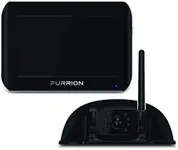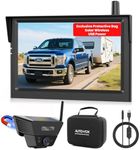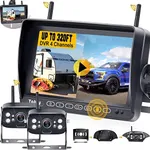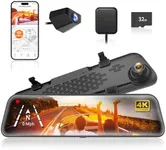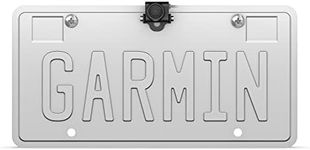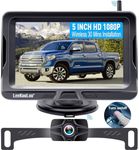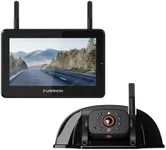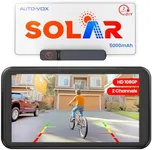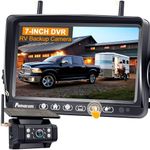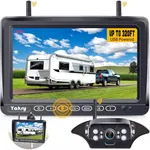Buying Guide for the Best Backup Cameras
Choosing a backup camera can make parking and reversing much safer and easier, especially if your vehicle doesn’t already have one built in. The right backup camera for you depends on your vehicle, how you plan to install it, and the features you find most useful. Understanding the key specifications will help you pick a camera that fits your needs and gives you confidence when driving in reverse.Camera ResolutionCamera resolution refers to how clear and detailed the image from the backup camera will be. Higher resolution means a sharper picture, making it easier to spot obstacles or pedestrians behind your vehicle. Resolutions can range from basic (around 480p), which is enough for simple guidance, to high definition (720p or 1080p), which provides a much clearer view. If you want to see small objects or need extra clarity in low light, go for a higher resolution. If you just need basic assistance, a lower resolution may be sufficient.
Field of ViewField of view describes how wide an area the camera can capture behind your vehicle. A wider field of view (measured in degrees) lets you see more of what’s behind and to the sides, reducing blind spots. Typical cameras range from about 120 to 180 degrees. A narrower view (around 120 degrees) is enough for straight-back parking, while a wider view (150-180 degrees) is better for seeing cross-traffic or tight spaces. Choose a field of view based on how much of the area behind your car you want to see.
Night VisionNight vision is the camera’s ability to provide a clear image in low-light or dark conditions, usually using infrared LEDs. This is important if you often park or reverse at night or in dimly lit areas. Some cameras offer basic night vision, which is enough for seeing large objects, while others provide enhanced night vision for more detail. If you drive a lot at night, prioritize a camera with strong night vision capabilities.
Wired vs. WirelessBackup cameras can be either wired or wireless. Wired cameras connect directly to your vehicle’s display, offering a more stable and reliable image, but installation can be more complex. Wireless cameras are easier to install since they transmit video signals without running cables, but they may be more prone to interference or lag. If you want a quick, simple setup, wireless might be best. If you prefer a consistent, high-quality image and don’t mind a more involved installation, consider a wired camera.
Display TypeThe display type refers to how you view the camera’s image. Some backup cameras come with their own screen, which can be mounted on your dashboard or mirror, while others connect to an existing in-car display. If your car already has a screen, make sure the camera is compatible. If not, look for a camera with a built-in display. Your choice depends on your vehicle’s setup and your preference for where you want to see the camera feed.
Waterproof RatingSince backup cameras are mounted outside the vehicle, they need to withstand rain, car washes, and dust. The waterproof rating, often shown as an IP (Ingress Protection) number, tells you how well the camera is sealed against water and dirt. A higher rating (like IP67 or IP68) means better protection. If you live in an area with harsh weather or plan to use the camera year-round, choose one with a high waterproof rating to ensure durability.
Parking GuidelinesMany backup cameras offer on-screen parking guidelines—colored lines that help you judge distance and alignment when reversing. Some cameras have fixed guidelines, while others offer dynamic guidelines that move as you turn the steering wheel. If you want extra help with parking, look for a camera with clear, easy-to-read guidelines. If you’re confident in your parking skills, this feature may be less important.
